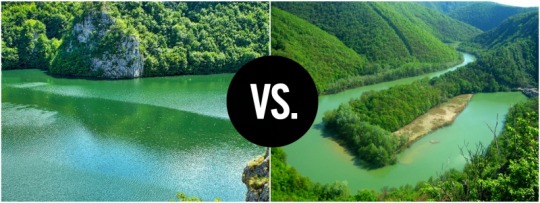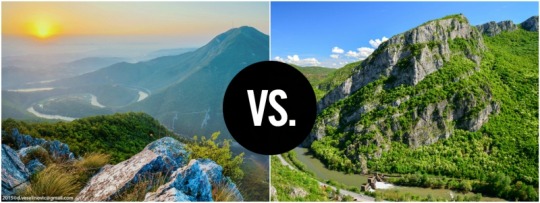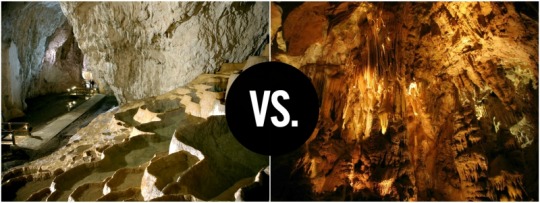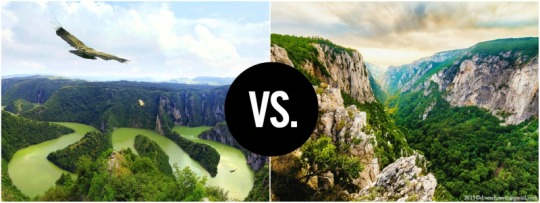#Resava River
Text
Medieval Orthodox Monasteries and Resava Cave Serbia

View On WordPress
#Battle of Kosovo#Beehive Hall Resava Cave#Beljanica#Busovata Village#Crystal Hall Resava Cave#Despot Stefan Lazarević#Despotova Kula (Despot’s Tower) Manasija Monastery#Flowstone Waterfalls#Fortification Walls Manasija Towers#Hall of History Resava Cave#Hall of Joined Columns Resava Cave#Lisine Waterfall (Veliki Buk)#Manasija Monastery#Morava School of Architecture#Municipality of Despotovac – Ice Age Portal#Organ Hall Resava Cave#Path of the Flowstone Waterfalls Resava Cave#Pomoravlje District#Prince Lazar Great Martyr of Kosovo#Rare Tunnel of Red Breccias Resava Cave#Ravanica Monastery#Ravanica Monastery Frescos#Resava Cave#Resava River#Restoran Vodopad Lisine#Rečka Village#Scriptorium Manasija Monastery#Stalactites#Stalagmites#Veliki Buk
2 notes
·
View notes
Text
Western vs Eastern Serbia
Both have stunning natural beauties. Both have magnificent mountains, lovely lakes, wonderful waterfalls and glorious gorges. Their canyons will take your breath away and their national parks will steal your heart forever. Their caves and monasteries will spark your curiosity and springs and fortresses awaken your imagination. With both Western and Eastern Serbia being unique in their own way, a hard choice is before you. So – it’s time to see which will your pick!
The Drina vs The Timok River

The Ovčar-Kablar vs The Sićevo Gorge

The Perućac vs The Krupaj Springs

The Stopića Cave vs The Resava Cave

The Tara vs The Đerdap National Park

The Uvac vs The Lazar’s Canyon

The Veliki Skakavac vs The Veliki Buk Waterfall

Zlatibor vs Stara Planina

The forests of Western and Eastern Serbia make its lungs, their rivers its veins, their monasteries, fortresses, villages and cities its soul, and the eastern and western mountain ranges its long arms with which Serbia tucks you into its warm embrace.
(taken from: www.serbia.com)
#it's been a while since i last promoted my country so here you go#stepping away from belgrade and embracing natural beauties#serbia#srbija#tara#krupajsko vrelo#drina#timok#ovčarsko-kablarska klisura#sićevačka klisura#perućac#stopića pećina#resavska pećina#lazarev kanjon#uvac#djerdap#veliki skakavac#veliki buk#zlatibor#stara planina
115 notes
·
View notes
Photo

Autumn hike at south Kucaj mountains, Serbia
South Kucaj is a mountain massif in Eastern Serbia, limited from the north by the river Resava and the mountain Beljanica, from the east to the Zlot river and Crni Vrh, at city Bor, from the south by the river Chestobrodica, and from the west by Pomoravlje.
Peaks of south Kucaj ; Javoracki vrh (engl. Javorak peak) (927 m), Mali Javorak (engl. Little Javorak) (756 m), Vis (873m), Crni Vrh (engl. Black peak) (870 m), Koziji rog (engl. Goats horn) (667 m) i Mali koziji rog (engl. Little goats horn) (517 m).
The flora is very diverse. Most common wood are beech, hornbeam, turkey oak, ash, oak, maple, juniper, etc. The mountain is rich with meadows and grasslands. There are plenty of medicinal herbs: St. John's wort, milfoil, wild oregano, thyme, nettle, melissa.
Also, it is abundant with mushrooms and edible mushrooms: boletus, chantarelle, field mushroom, forest champignons, oyster mushroom. Forest fruits can be found there. Such as: forest berries, blackberries, cornel, hazelnuts, wild apples, wild pears, and in some parts of the mountain wild cherries. In the autumn there is sweetbrier, red and black hawthorn and sloe.
Fauna is very diverse: fox, rabbit, wild boar, roe deer, badger, squirrel, and in winter there are also wolves. Until recently, Kucaj mountain was a favorite hunting ground, but has now been declared a reserve.
#landscape photography#nature photography#original photography#my photography#autumn#fall#mountains#serbia#hiking#kucaj mountains#balkans#europe#grza#grza resort#paraćin#pomoravlje#morava valley#južni kučaj#nature#landscape
1 note
·
View note
Text
Chinse President Xi Jinping Visits Belgrade Serbia
Belgrade Budapest Railway – ZAWYA
Belgrade has been buzzing in anticipation of Chinese President Xi Jinping’s arrival yesterday for a two-day visit. It’s Xi’s second state visit to Serbia, amid “high expectations that the ironclad friendship between the two nations will be further enriched and strengthened”. Xi’s visit was also said to be “on the occasion of Serbia marking the 25th anniversary of…

View On WordPress
#25th Anniversary 1999 NATO Bombings#Belgrade Budapest Railway#China Investment Serbian Infrastructure Projects#Chinese President Xi Jinping Belgrade Visit 2024#Danube River#DeLasol Solar Plant#HBIS Smederevo Steel Plant#High-Speed Rail Between Budapest and Belgrade#High-Speed Railway Between Belgrade and Novi Sad#Manasija Monastery#Ravanica Monastery#Resava Cave#Serbian Green Hydrogen Production#Serbian Mining & Energy Minister Dobrovská Đedović Handanović#Serbian Solar Power Plants#Serbian Wind Farms#Zemun-Borca Bridge#Zijin Mining Group
0 notes
Photo

Srbija South Kucaj is a mountain massif in Eastern Serbia, limited from the north by the river Resava and the mountain Beljanica, from the east to the Zlot river and Crni Vrh, at city Bor, from the south by the river Chestobrodica, and from the west by Pomoravlje.
Peaks of south Kucaj ; Javoracki vrh (engl. Javorak peak) (927 m), Mali Javorak (engl. Little Javorak) (756 m), Vis (873m), Crni Vrh (engl. Black peak) (870 m), Koziji rog (engl. Goats horn) (667 m) i Mali koziji rog (engl. Little goats horn) (517 m).
The flora is very diverse. Most common wood are beech, hornbeam, turkey oak, ash, oak, maple, juniper, etc. The mountain is rich with meadows and grasslands. There are plenty of medicinal herbs: St. John’s wort, milfoil, wild oregano, thyme, nettle, melissa.
Also, it is abundant with mushrooms and edible mushrooms: boletus, chantarelle, field mushroom, forest champignons, oyster mushroom. Forest fruits can be found there. Such as: forest berries, blackberries, cornel, hazelnuts, wild apples, wild pears, and in some parts of the mountain wild cherries. In the autumn there is sweetbrier, red and black hawthorn and sloe.
Fauna is very diverse: fox, rabbit, wild boar, roe deer, badger, squirrel, and in winter there are also wolves. Until recently, Kucaj mountain was a favorite hunting ground, but has now been declared a reserve.
#original photography#autumn#fall#mountains#serbia#sky#hiking#kucaj mountains#balkans#europe#grza resort#grza#pomoravlje#my photos#srbija#nature#landscape
1 note
·
View note